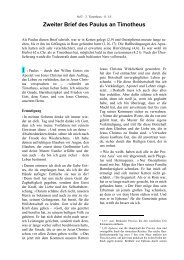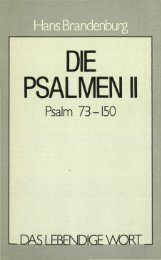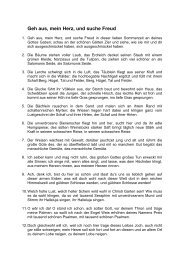Create successful ePaper yourself
Turn your PDF publications into a flip-book with our unique Google optimized e-Paper software.
The cells<br />
– our body’s 100 million<br />
million building blocks<br />
<br />
<br />
<br />
Did you know that the human body consists of<br />
approximately 100 million million cells, each of<br />
which contains 10,000 times as many molecules<br />
as there are stars in the Milky Way? Note that the<br />
Milky Way comprises at least 100,000 million<br />
stars.<br />
<br />
<br />
The smallest building blocks of the human body,<br />
as well as of plants and animals, are the cells.<br />
Body structures consist of cells, along with intercellular<br />
material. In the case of unicellular organisms<br />
(protozoa), the cell is the entire organism. A<br />
cell is the smallest possible morphological entity<br />
capable of independent life. In metazoa (manycelled<br />
creatures) the cells are the basic functional<br />
organic units, or building blocks, which make up<br />
the whole organism. Cells differ widely in regard<br />
to size, shape, and function.<br />
Cell membrane<br />
Section of<br />
a dendrite<br />
Cytoplasm with<br />
mitochondria<br />
and endoplasmic<br />
reticulum<br />
Nucleus with<br />
nucleolus<br />
Post-synaptic<br />
unit<br />
Synaptic vesicles<br />
Node of Ranvier<br />
Myelin sheath<br />
Pre-synaptic<br />
nerve terminal<br />
<br />
<br />
<br />
Schematic diagram of a neural (nerve) cell.<br />
72
















